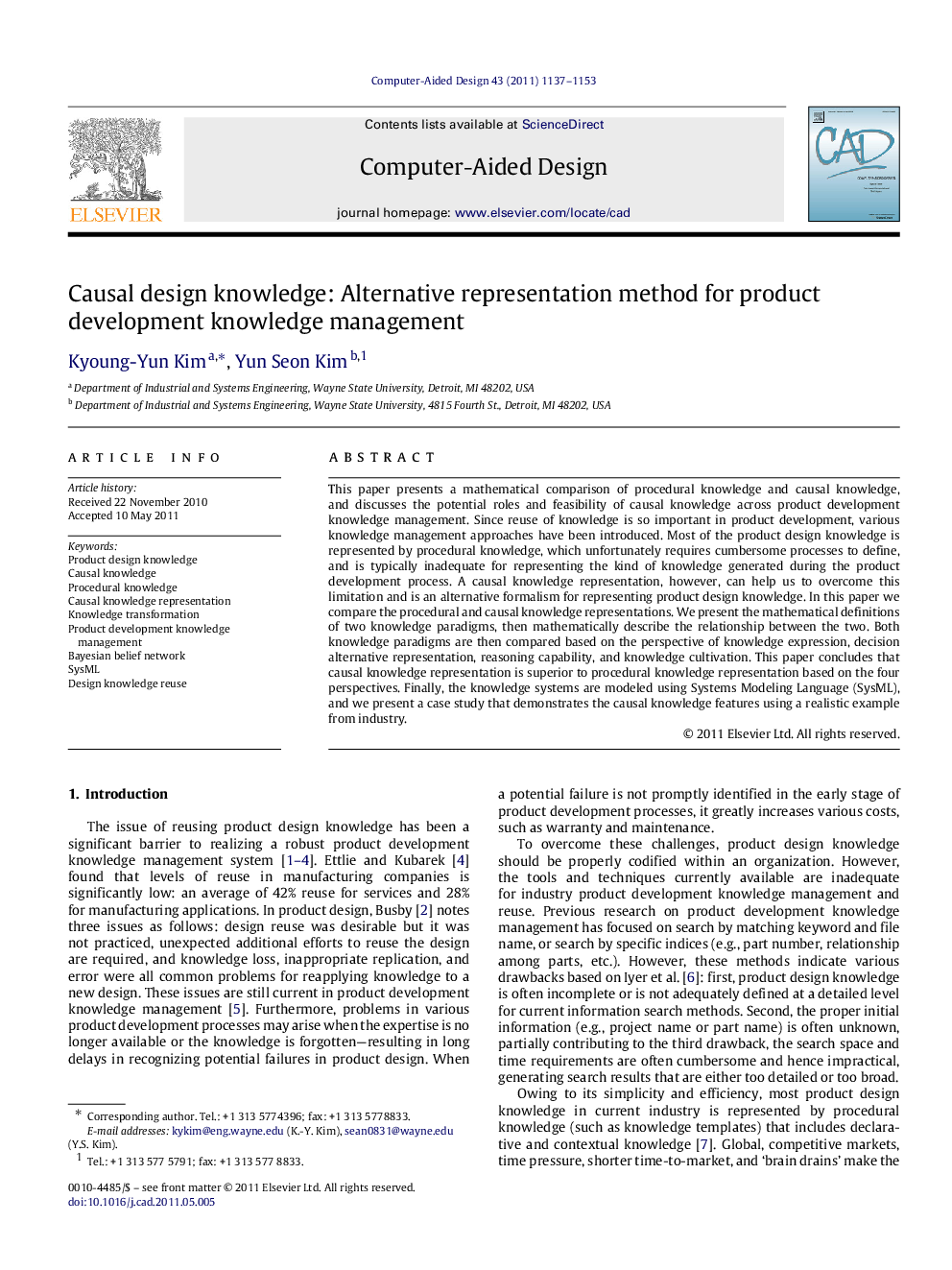| Article ID | Journal | Published Year | Pages | File Type |
|---|---|---|---|---|
| 439676 | Computer-Aided Design | 2011 | 17 Pages |
This paper presents a mathematical comparison of procedural knowledge and causal knowledge, and discusses the potential roles and feasibility of causal knowledge across product development knowledge management. Since reuse of knowledge is so important in product development, various knowledge management approaches have been introduced. Most of the product design knowledge is represented by procedural knowledge, which unfortunately requires cumbersome processes to define, and is typically inadequate for representing the kind of knowledge generated during the product development process. A causal knowledge representation, however, can help us to overcome this limitation and is an alternative formalism for representing product design knowledge. In this paper we compare the procedural and causal knowledge representations. We present the mathematical definitions of two knowledge paradigms, then mathematically describe the relationship between the two. Both knowledge paradigms are then compared based on the perspective of knowledge expression, decision alternative representation, reasoning capability, and knowledge cultivation. This paper concludes that causal knowledge representation is superior to procedural knowledge representation based on the four perspectives. Finally, the knowledge systems are modeled using Systems Modeling Language (SysML), and we present a case study that demonstrates the causal knowledge features using a realistic example from industry.
► Comparative study to discuss the potential benefits and the feasibility of CK. ► Superior characteristics of CK for product development knowledge management. ► Review of knowledge integration by structure and belief integration of CK. ► Knowledge systems modeled using Systems Modeling Language (SysML). ► Realistic case study that demonstrates the CK features.
